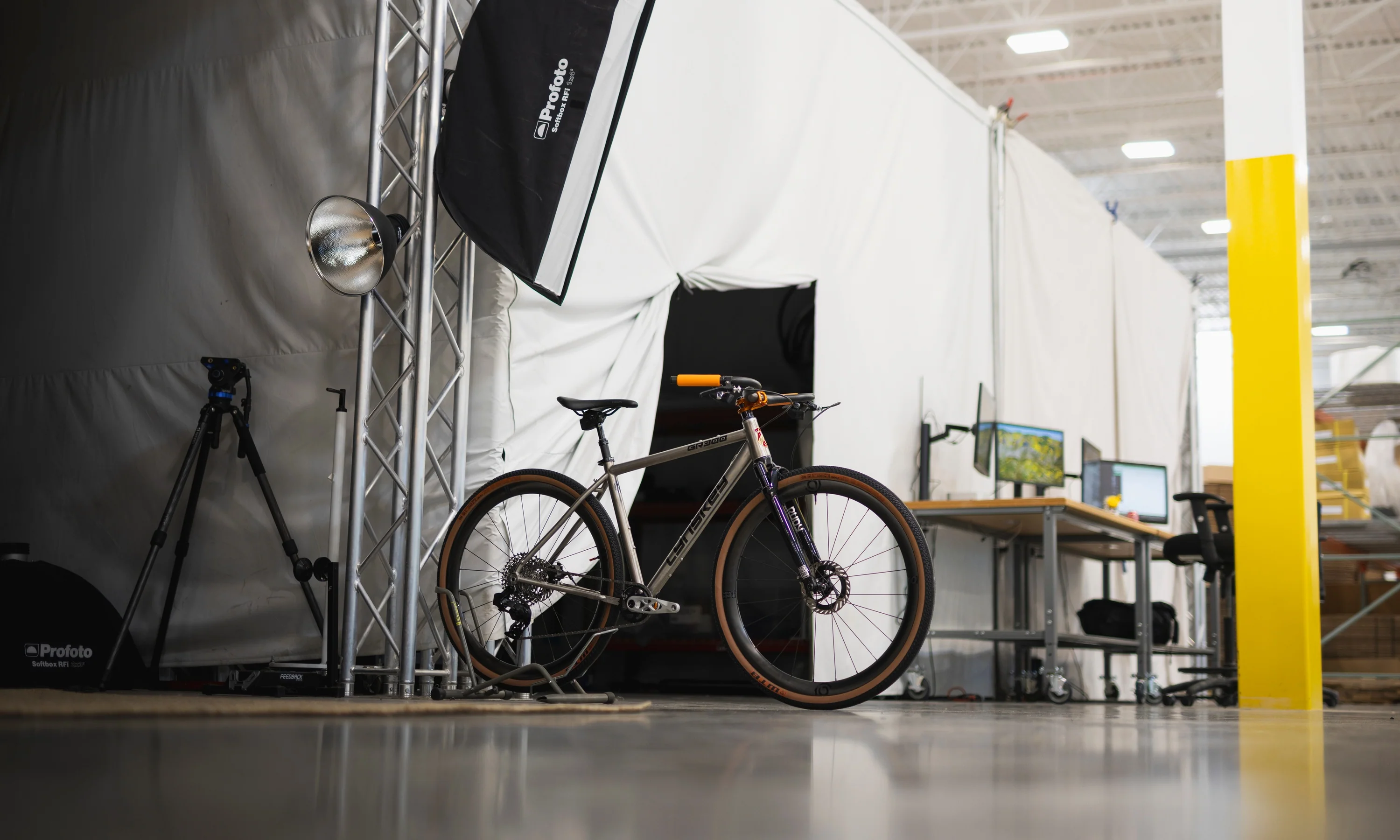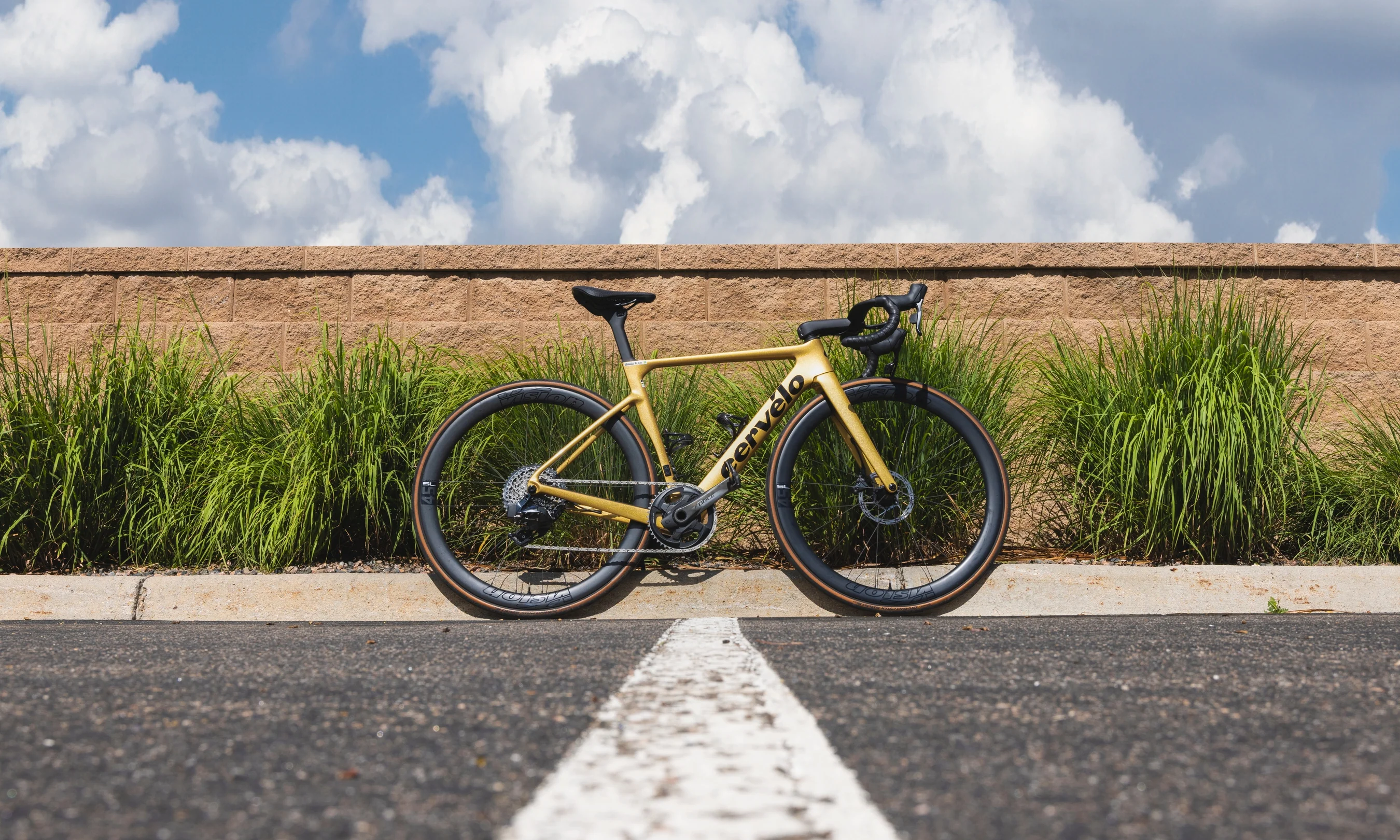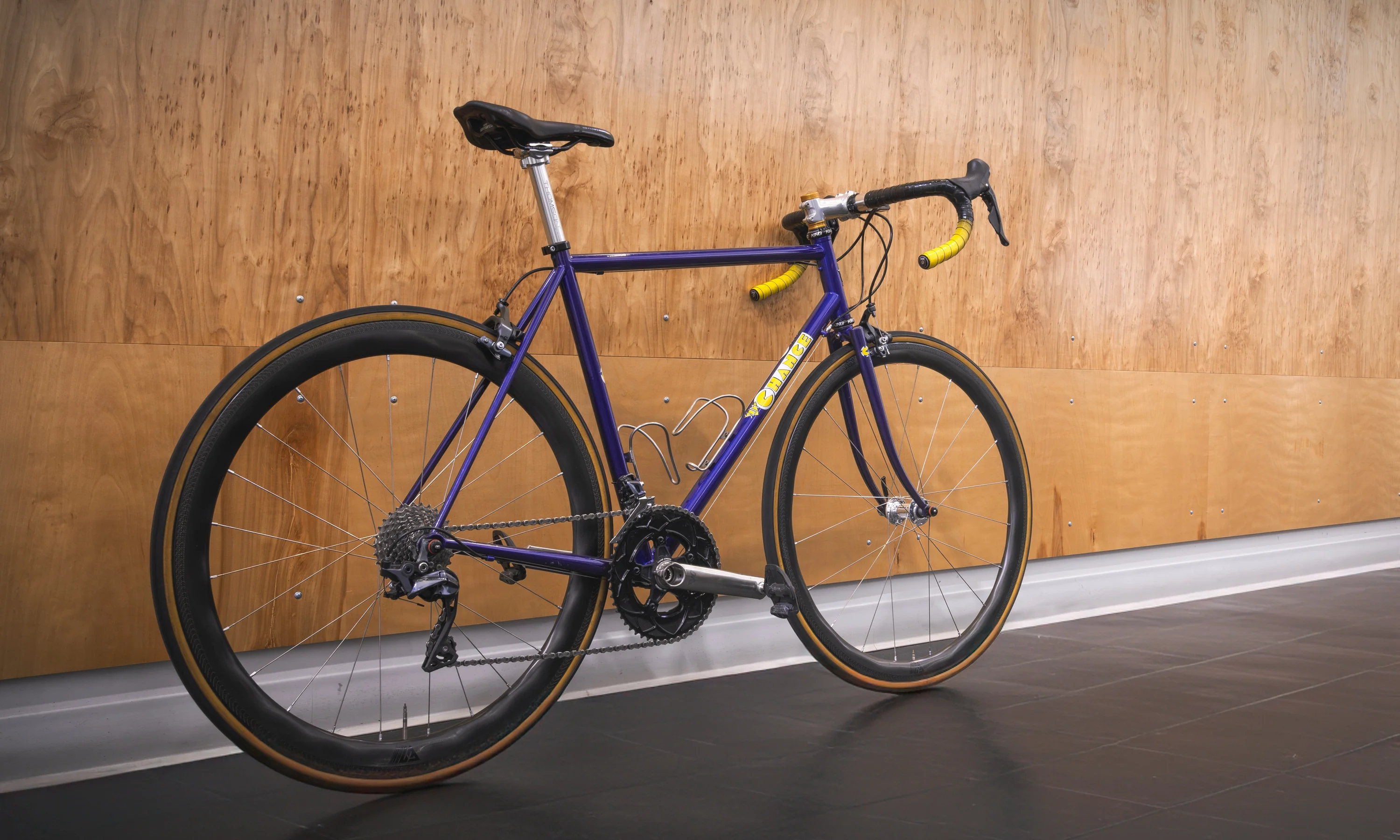I prefer modern bikes, but here at TPC, I also come across plenty of stunning vintage rigs that just can’t be ignored. If you don’t know, the TPC museum has one of the biggest collections of vintage bikes in the world. Right now, we’re working on displaying them at our headquarters in Louisville, CO so that people can actually come in and see all our amazing historic bikes.
Recently, one of our mechanics was building up the latest vintage bikes join the collection and one that immediately caught everyone’s eye was this lovely pink and gold Ritchey mountain bike. It features a unique custom finish, and the attention to detail is amazing.
It's current owner, Noah Gellner, gave me the full rundown on this unique bike. Let’s dive in a take a closer look.
The Wild Irish Rose
 According to Gellner, this Ritchey frame is from 1984/5. It is a so-called "B” frame, like a Ritchey Mount Tam, Timber Wolf, Timber Comp, or Commando. B frames were less expensive and didn't have extra flourishes like the faux lugs of the “A” frames (Annapurna) or the extra finishing details found on “C” frames (Super Comp or Team Comp). Nonetheless, it is still a high-quality handmade frame crafted by the legendary Tom Ritchey.
According to Gellner, this Ritchey frame is from 1984/5. It is a so-called "B” frame, like a Ritchey Mount Tam, Timber Wolf, Timber Comp, or Commando. B frames were less expensive and didn't have extra flourishes like the faux lugs of the “A” frames (Annapurna) or the extra finishing details found on “C” frames (Super Comp or Team Comp). Nonetheless, it is still a high-quality handmade frame crafted by the legendary Tom Ritchey.
 The finish is fully custom. The original owner sent the frame, fork, stem, and Silca pump to Columbine Cycle Works in California to be painted a luscious rose gold. The paint looks amazing, but it’s the blingy black and gold accents that really take this bike to the next level. The original owner was connected with a local shop that customized motorcycles and he used them to refinish the components to create a unified black and gold theme.
The finish is fully custom. The original owner sent the frame, fork, stem, and Silca pump to Columbine Cycle Works in California to be painted a luscious rose gold. The paint looks amazing, but it’s the blingy black and gold accents that really take this bike to the next level. The original owner was connected with a local shop that customized motorcycles and he used them to refinish the components to create a unified black and gold theme.
 The components have been plated with actual 14k gold, and the attention to detail is impressive. The Campagnolo Super Record front derailleur cage is gold-plated. The headset, hubs, and quick releases are all gold. Every single bolt on the bike is gold. Even the valve caps are gold. Everything that’s not gold was refinished in a satiny black, making the rose and gold of the bike pop even more.
The components have been plated with actual 14k gold, and the attention to detail is impressive. The Campagnolo Super Record front derailleur cage is gold-plated. The headset, hubs, and quick releases are all gold. Every single bolt on the bike is gold. Even the valve caps are gold. Everything that’s not gold was refinished in a satiny black, making the rose and gold of the bike pop even more.
 The only part that was missed was the parallelogram of the Super Record rear derailleur. With how much gold there is everywhere else, I can only imagine that this was purposeful. Why? I don't know. Also, I do think a bike like this deserves a gold chain too, but maybe that’d push it too far? You tell me.
The only part that was missed was the parallelogram of the Super Record rear derailleur. With how much gold there is everywhere else, I can only imagine that this was purposeful. Why? I don't know. Also, I do think a bike like this deserves a gold chain too, but maybe that’d push it too far? You tell me.
The original owner named his creation “Wild Irish Rose.”
"The result is a unique bike capturing a moment in the evolution of the mountain bikes," Gellner said, "where the bikes were rough and wild, even while the Wild Irish Rose plays against that roughness with a deep lush luxury."
The Build
 Instead of a classic Ritchey Bullmoose handlebar or the Japanese-made Nitto version, this bike has a Steve Potts stem and custom-bent Salsa chromoly bar. The most interesting choice though, is the drivtrain.
Instead of a classic Ritchey Bullmoose handlebar or the Japanese-made Nitto version, this bike has a Steve Potts stem and custom-bent Salsa chromoly bar. The most interesting choice though, is the drivtrain.
"The bike is unusual in its use of Campagnolo parts," Gellner told me. I certainly haven't seen many Campy-equipped mountain bikes.
 Gellner explained that the Super Record rear derailleur was modded with a longer cage. There's a matching Super Record front derailleur, headset, cranks, seat quick release, and wheel quick releases. The seatpost is a Nuovo Record.
Gellner explained that the Super Record rear derailleur was modded with a longer cage. There's a matching Super Record front derailleur, headset, cranks, seat quick release, and wheel quick releases. The seatpost is a Nuovo Record.
 The shifters, brake levers, and front cantilever brake are all from the Shimano M700 “Deer Head” group — the earliest iteration of Deore XT (some say “Deore” is a Japanese approximation of “deer”). The rear brake, which is mounted under the chainstays, is a WTB Roller Cam. The hubs and bottom bracket are Phil Wood. The pedals are a pair of meaty Suntour XCii "bear traps".
The shifters, brake levers, and front cantilever brake are all from the Shimano M700 “Deer Head” group — the earliest iteration of Deore XT (some say “Deore” is a Japanese approximation of “deer”). The rear brake, which is mounted under the chainstays, is a WTB Roller Cam. The hubs and bottom bracket are Phil Wood. The pedals are a pair of meaty Suntour XCii "bear traps".
 It also has two components that might be unfamiliar to younger riders: the Hite-Rite and a portage strap. The Hite-Rite is the coil spring contraption attached to the seatpost (and also plated in gold).
It also has two components that might be unfamiliar to younger riders: the Hite-Rite and a portage strap. The Hite-Rite is the coil spring contraption attached to the seatpost (and also plated in gold).
 It was created in 1984 by mountain bike legends Joe Breeze and Josh Angell and it allowed riders to drop their saddle on the fly by loosening the quick-release seatpost clamp. Loosen the quick-release again, and the Hite-Rite would return the saddle to its original position. This was invented decades before the first dropper posts, and it was the first system of its kind.
It was created in 1984 by mountain bike legends Joe Breeze and Josh Angell and it allowed riders to drop their saddle on the fly by loosening the quick-release seatpost clamp. Loosen the quick-release again, and the Hite-Rite would return the saddle to its original position. This was invented decades before the first dropper posts, and it was the first system of its kind.
 The portage strap attaches to braze-ons on the frame and, as the name implies, it’s for “portaging” your bicycle on your shoulder. In early days, before trails were designed to play nice with mountain bikes, hike-a-bikes were common and shouldering your rig with a fine portage strap was de rigueur.
The portage strap attaches to braze-ons on the frame and, as the name implies, it’s for “portaging” your bicycle on your shoulder. In early days, before trails were designed to play nice with mountain bikes, hike-a-bikes were common and shouldering your rig with a fine portage strap was de rigueur.
The Hite-Rite and portage strap haven’t seen much use though, and this bike was likely never ridden after receiving its custom finish. It’s too bad, but any actual trail action would likely wear away the precious gold plating (especially on that front derailleur!). Instead, the Wild Irish Rose has lived out its life as a beautiful piece of art, and now, it’s the blingiest bike on display in TPC’s vintage museum.

























